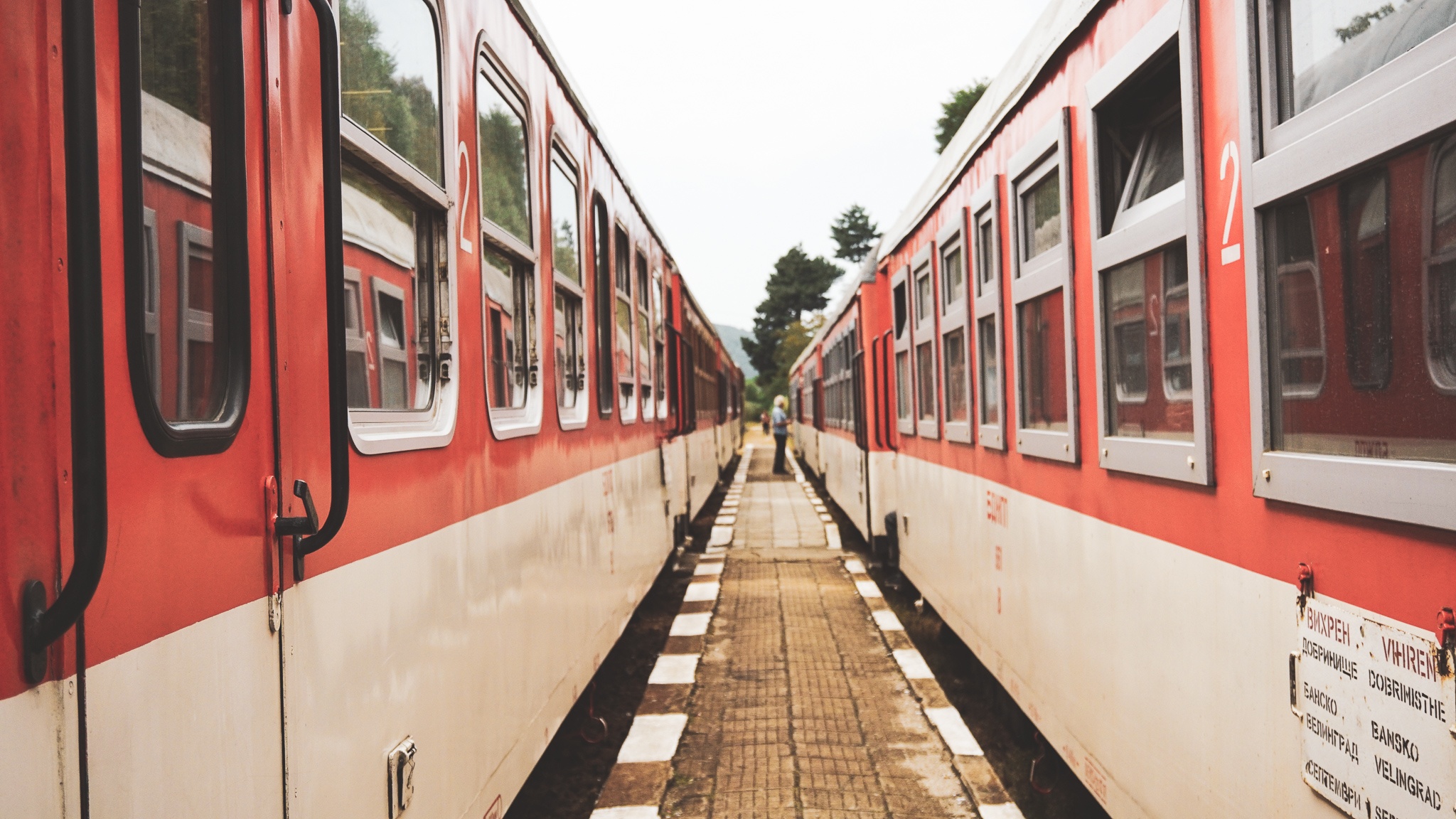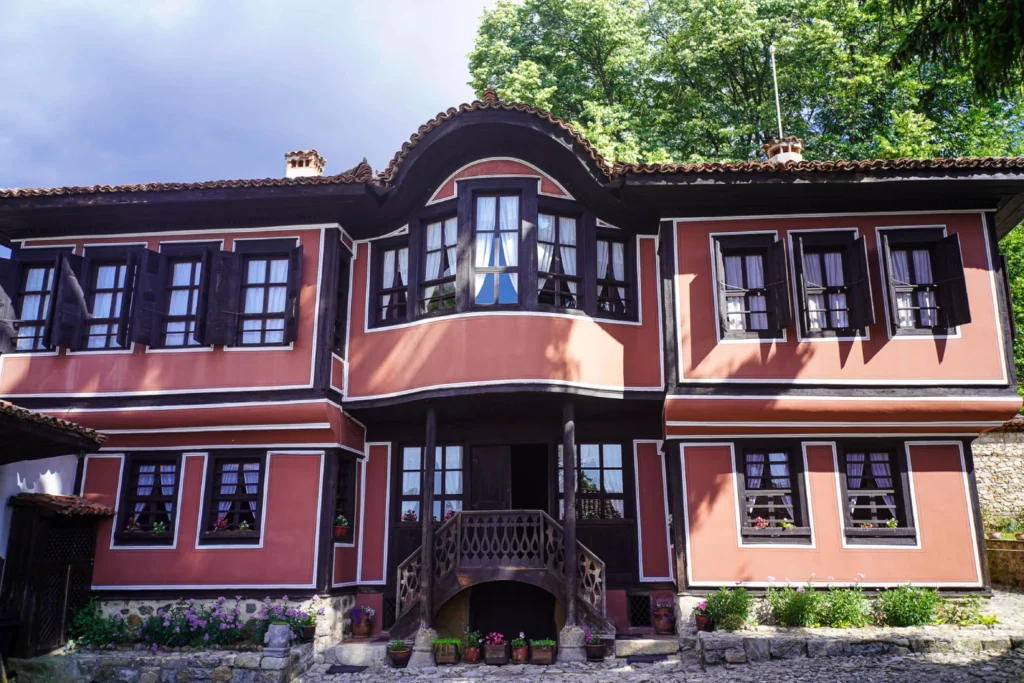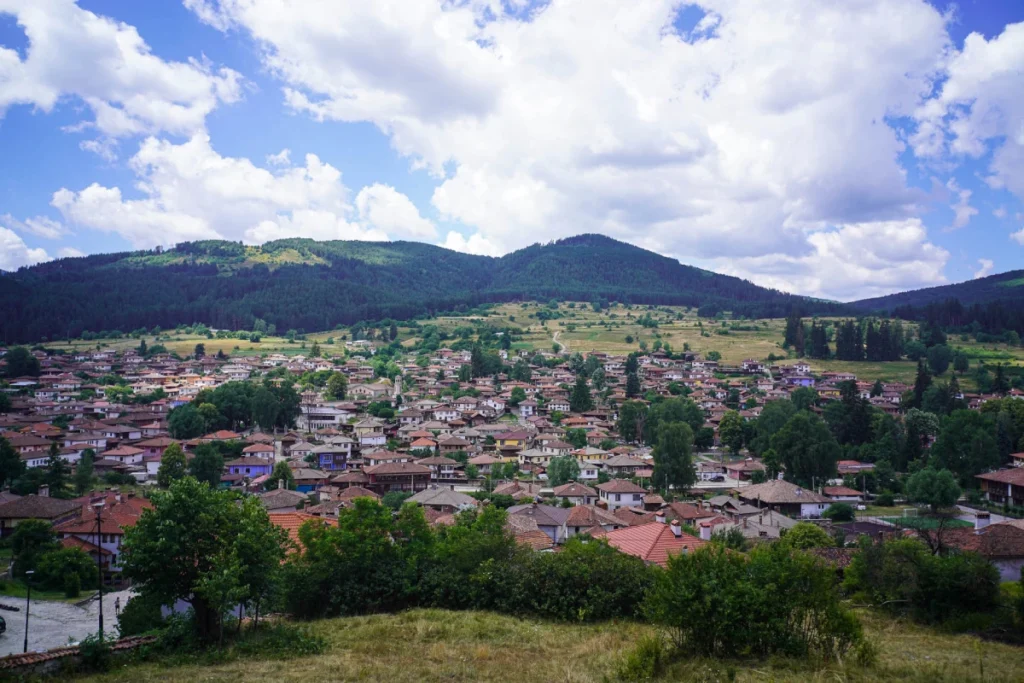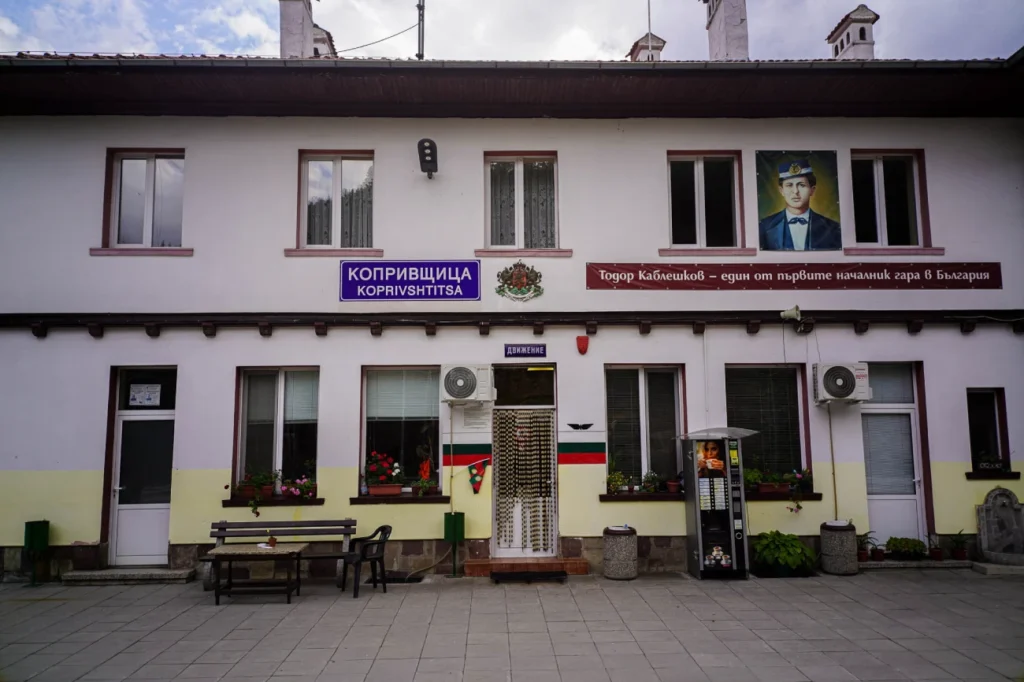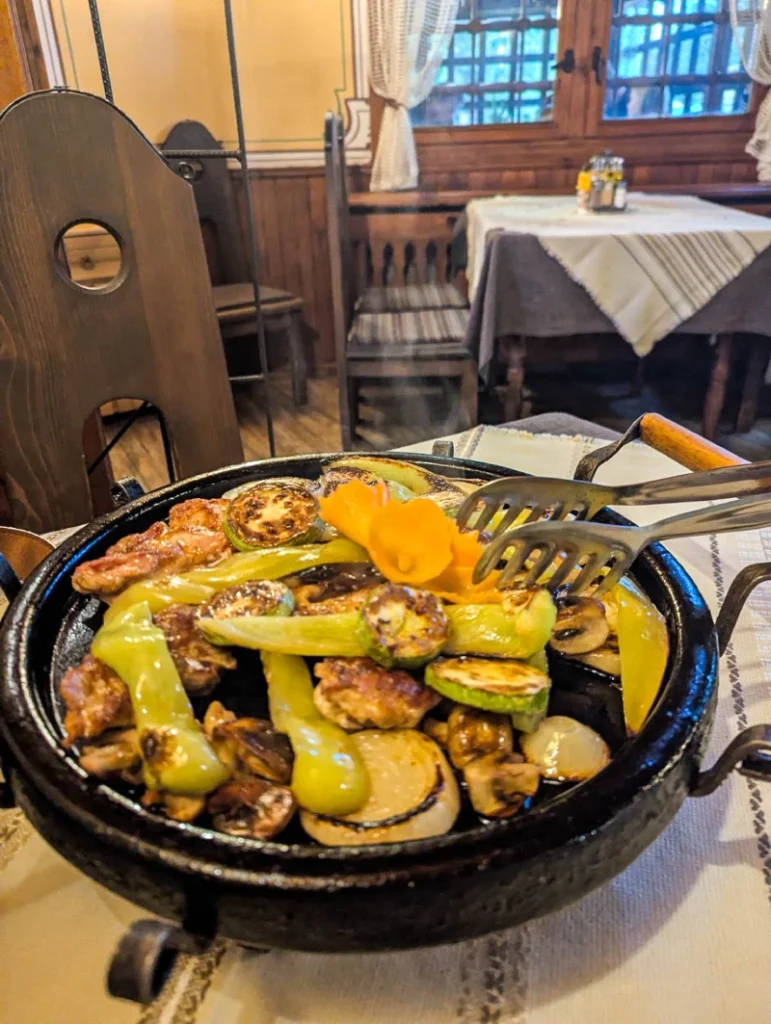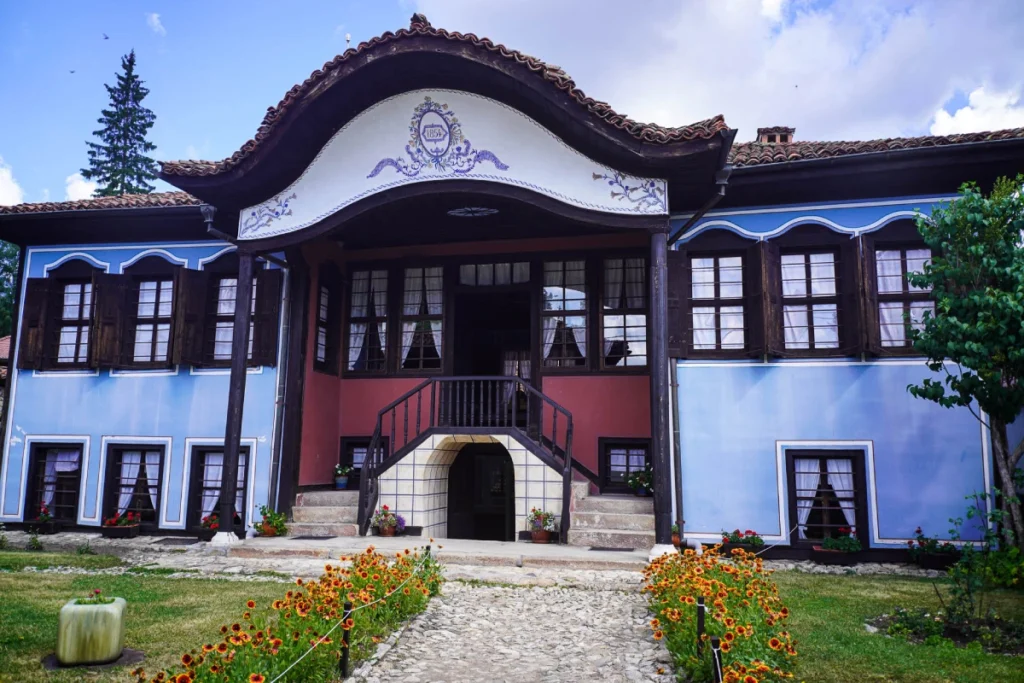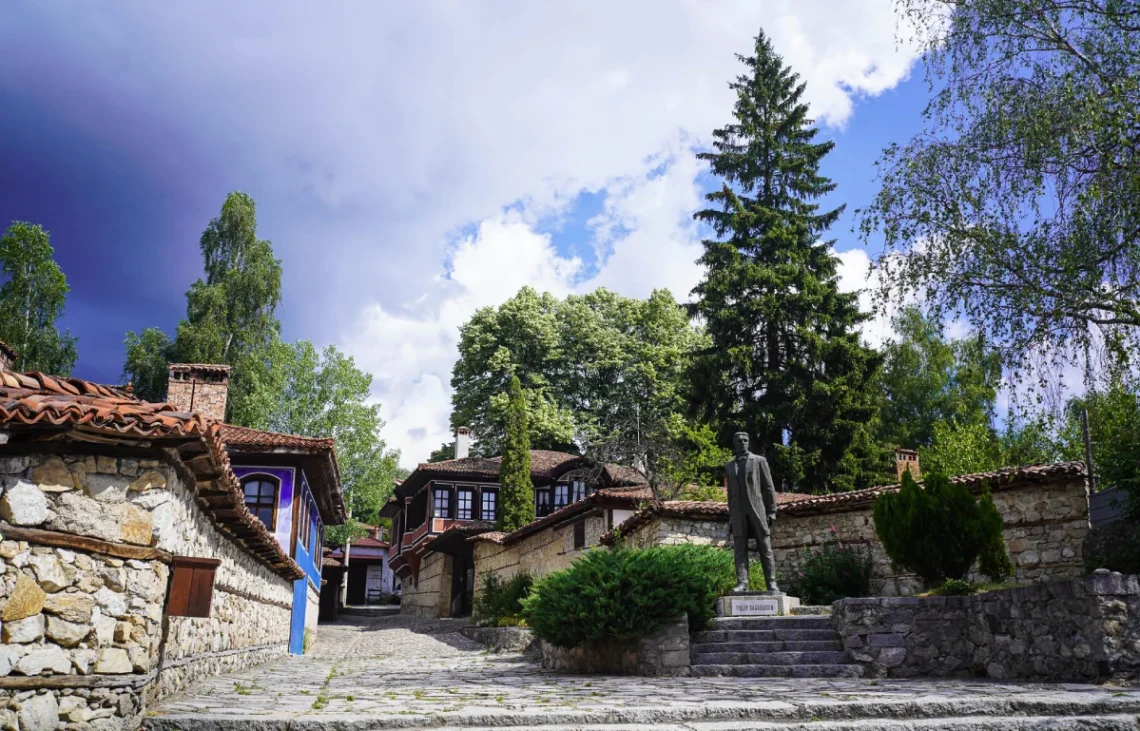
How to Visit Koprivshtitsa, Bulgaria – Where the Past Still Walks the Streets
Last Updated on August 2, 2025 by Polly Dimitrova
Tucked into the folds of the Sredna Gora mountains, Koprivshtitsa looks like a postcard—with its cobbled streets, brightly painted houses, and flower-filled courtyards. But behind the beauty lies something deeper. More than just a picturesque town, Koprivshtitsa is a rare blend of remarkable Revival architecture and profound historical significance, playing a key role in shaping Bulgaria’s path to independence.
This is one of the few places in Bulgaria where you can truly walk through history—not in a museum, but out in the open air. Each house, monument, and bridge tells a story from the country’s 19th-century struggle for freedom. Whether you are a history buff, an architecture lover, or simply someone seeking a quiet, scenic escape from city life, Koprivshtitsa offers something special.
From historic house-museums to picturesque bridges, there are plenty of memorable things to do in Koprivshtitsa. And it’s not just a summer destination—the town’s charm stretches across all seasons, with crisp mountain air in autumn, snow-dusted rooftops in winter, and lively festivals in spring and summer. This guide will walk you through what to see in Koprivshtitsa, how to get there, where to stay, and why this historic town in Bulgaria continues to inspire both locals and visitors alike.
Koprivshtitsa History
Koprivshtitsa might be small, but its role in Bulgarian history is anything but. The town was a major center of the Bulgarian National Revival in the 18th and 19th centuries—a period when Bulgarians began to push back against Ottoman rule and reclaim their cultural identity. Most famously, Koprivshtitsa was the spark that lit the April Uprising of 1876—a crucial rebellion against the Ottoman Empire.
The town is home to over 380 historic buildings, many of which have been carefully restored to reflect their original 19th-century appearance. These colorful Revival-style houses are not just beautiful—they are deeply symbolic of Bulgarian culture and traditions. The town also produced writers, poets, and political leaders, many of whom are honored in the house museums you can visit today. That is what makes Koprivshtitsa so special. It is a place where architectural beauty and revolutionary spirit meet—where every colorful façade hides a chapter of the nation’s story.
Things to Do in Koprivshtitsa
Visit Six Historic Houses with One Ticket
The town is a living museum, with several historic homes turned into house-museums. You can visit six of them with a combined ticket, each offering a unique glimpse into Bulgaria’s intriguing past.
- Oslekov House – Baroque-style mansion with stunning murals and interior works of a wealthy 19th-century merchant. Admire the artistry and craftsmanship through beautiful wood-carved ceilings and intricate frescoes.
- Lyuben Karavelov House – The home of Lyuben Karavelov, a key figure in Bulgaria’s National Revival and a passionate writer and journalist. Еxplore Karavelov’s personal belongings and manuscripts, gaining insight into his literary contributions and revolutionary ideas.
- Dimcho Debelyanov House –The beautiful blue house and birthplace of the beloved Bulgarian poet Dimcho Debelyanov. Connect with the soul of one of Bulgaria’s most poetic voices by experiencing the rooms filled with personal artifacts, letters, and photographs.
- Georgi Benkovski House – Commemorates one of the leaders of the April Uprising – Georgi Benkovski. Learn the story of revolutionary activities and the broader struggle for freedom against Ottoman rule. The house contains weapons, personal items, and detailed accounts of the uprising, making it a must-visit for history enthusiasts.
- Todor Kableshkov House – Аnother crucial figure in Bulgaria’s fight for independence, known for sending the famous “Blood Letter” that ignited the April Uprising. Discover documents, weapons, and personal belongings that bring his revolutionary legacy to life.
- Lyutov House – The museum highlights traditional Bulgarian household items, tools, and artisan work. Take a glimpse into the everyday life and crafts of the Revival period. The exhibits emphasize the importance of craftmanship in preserving Bulgarian culture.
The combined ticket price is 15 BGN per person and includes access to all 6 museums. Visiting all of them would take at least half a day. Personally we decided to visit 2 choosing Todor Kableshkov House and Lyutov House.
Monument with a View
Climbing the stairs to reach the Georgi Benkovski Monument is among the best things to do in Koprivshtitsa. The path is gentle and easily manageable, even for families with children—but it is not the walk itself that leaves a lasting impression.
As you reach the top, a breathtaking view unfolds beneath you: the peaceful town nestled in the valley, with its red-tiled rooftops scattered against the lush greenery of the Sredna Gora mountains.
It is the perfect spot to pause, breathe in the mountain air, and reflect on the history held in the quiet streets below. Bring a bottle of water, maybe even a snack, and stay a while—it is a view worth lingering over.
Kalachev Bridge
While one remains fascinated by the number of picturesque stone bridges scattered across Koprivshtitsa, there is one that holds far more significance than the rest.
Kalachev Bridge, gracefully arching over the Topolnitsa River, may appear like just another charming photo opportunity. It was at this place that the first shot of the April Uprising was fired in 1876, marking the beginning of Bulgaria’s bold push for independence from Ottoman rule.
Today, the scene is serene: the gentle sound of flowing water, the reflection of Revival-style houses in the river, and the quiet presence of the surrounding hills.
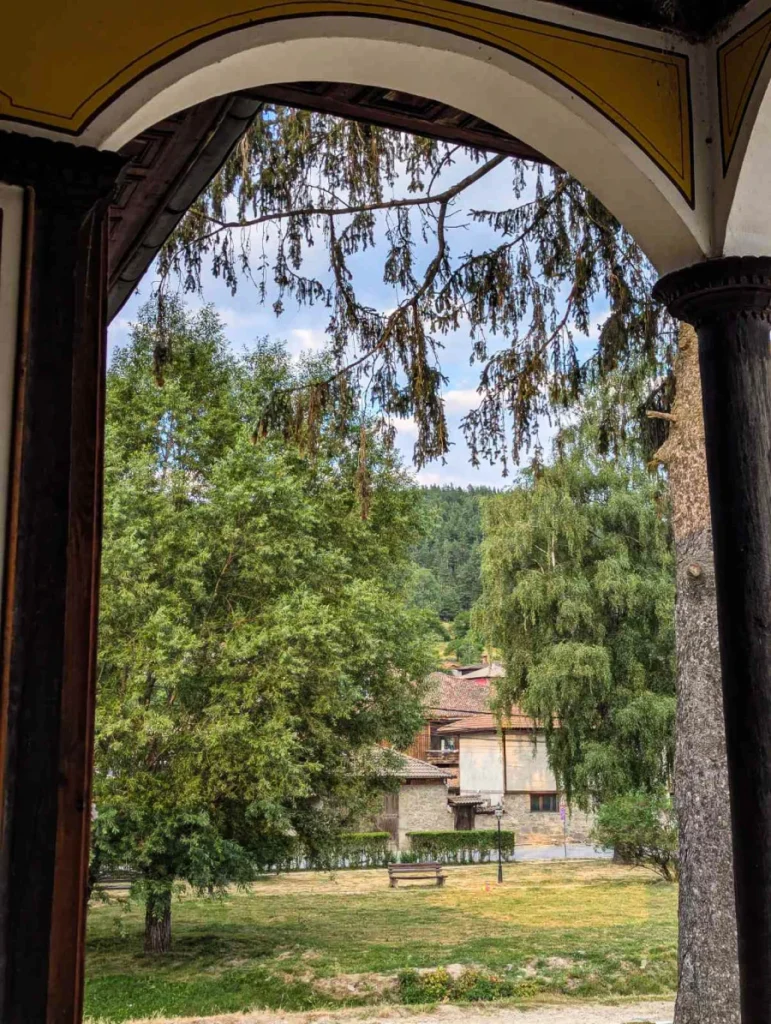
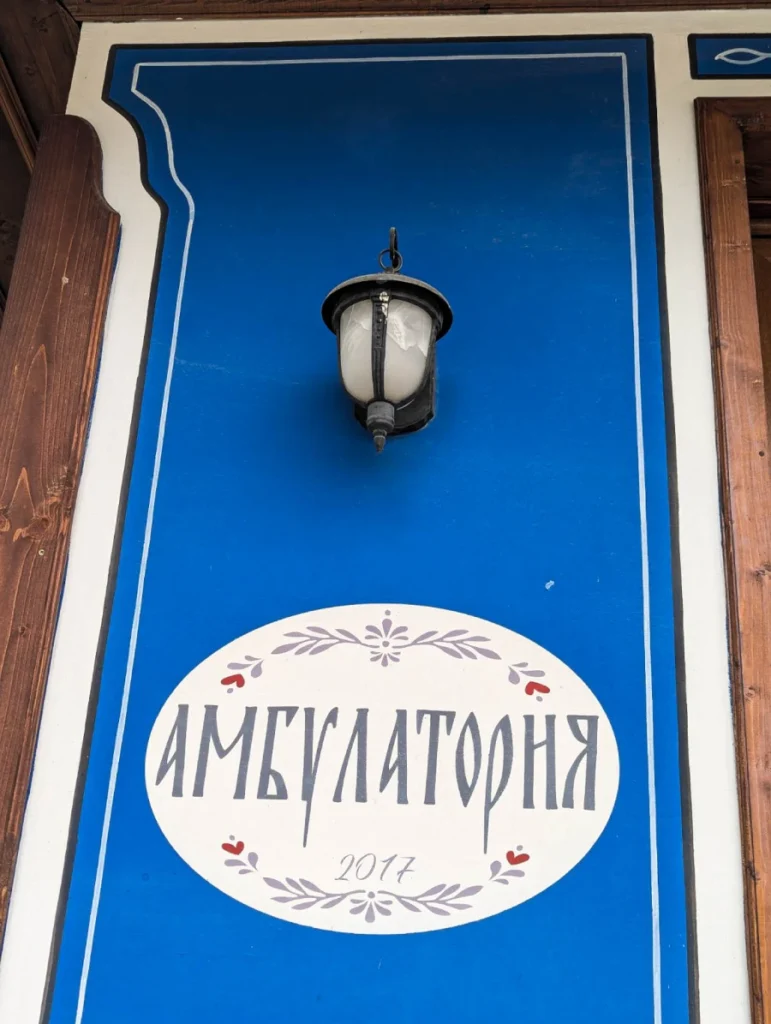
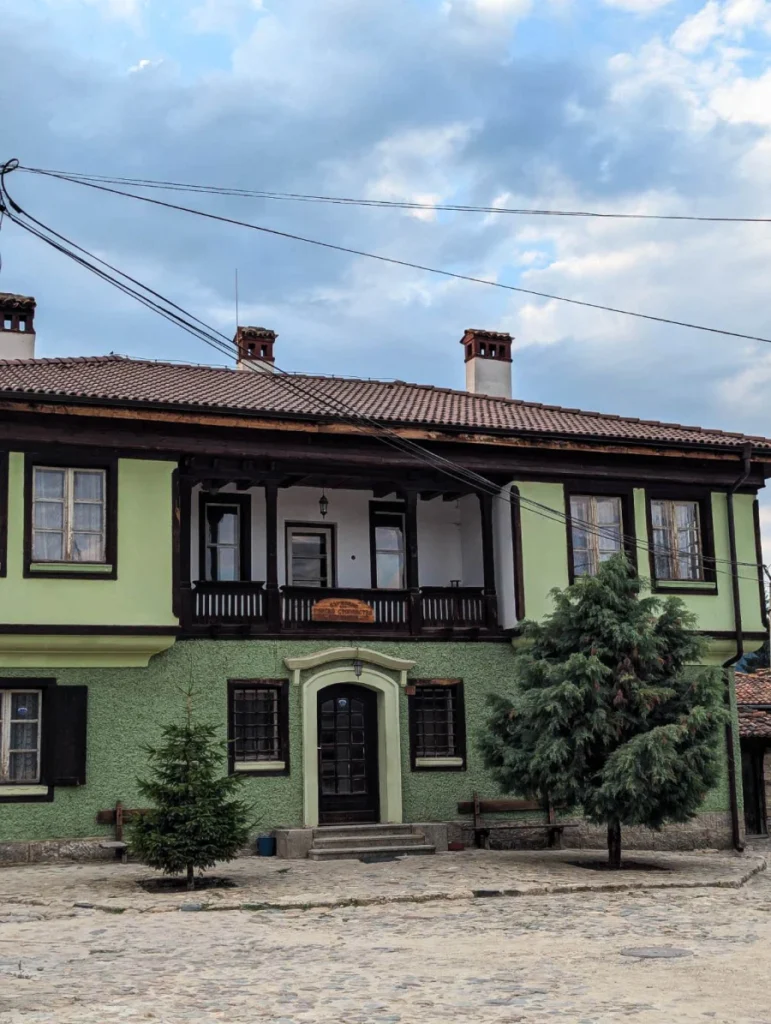
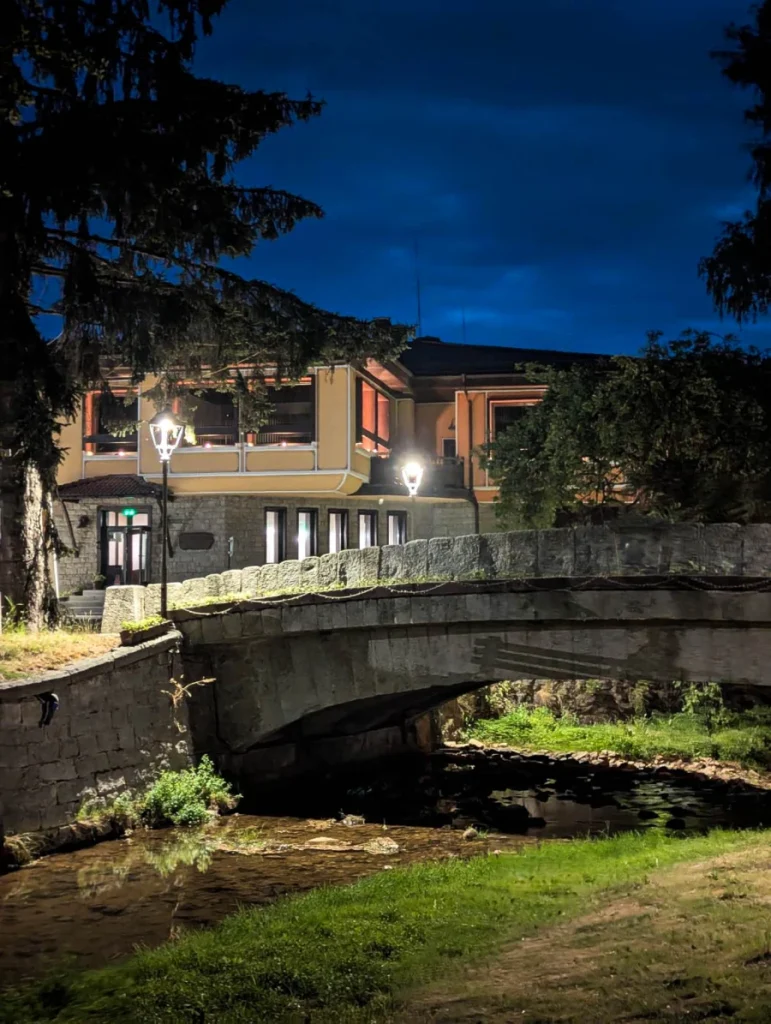
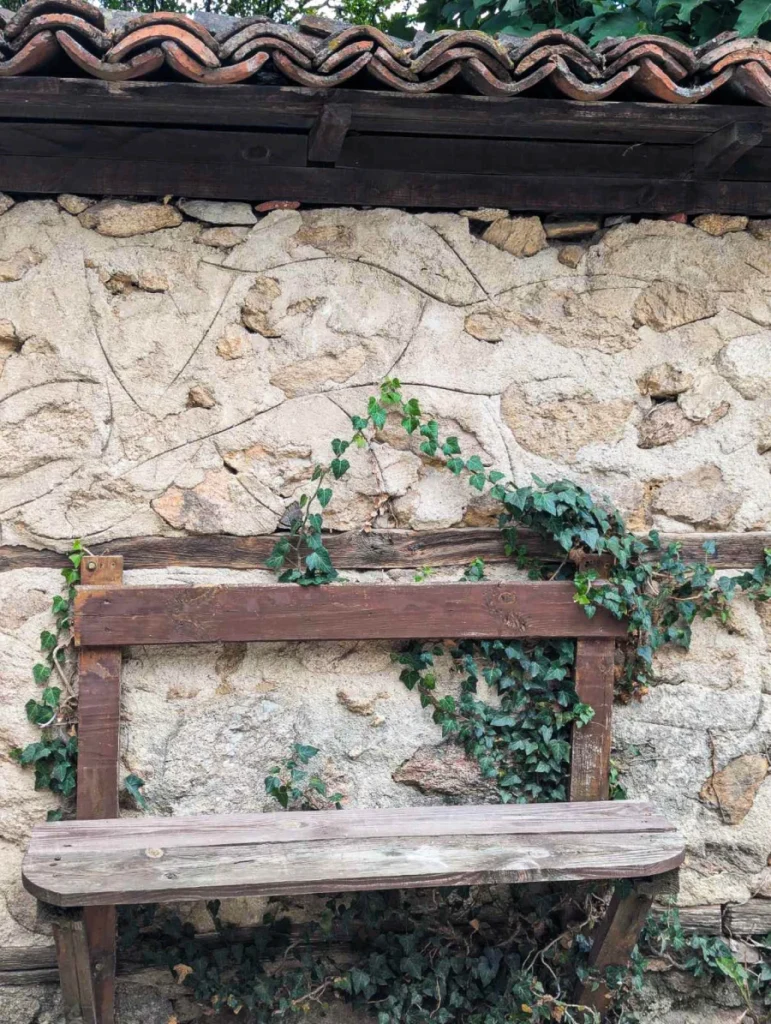
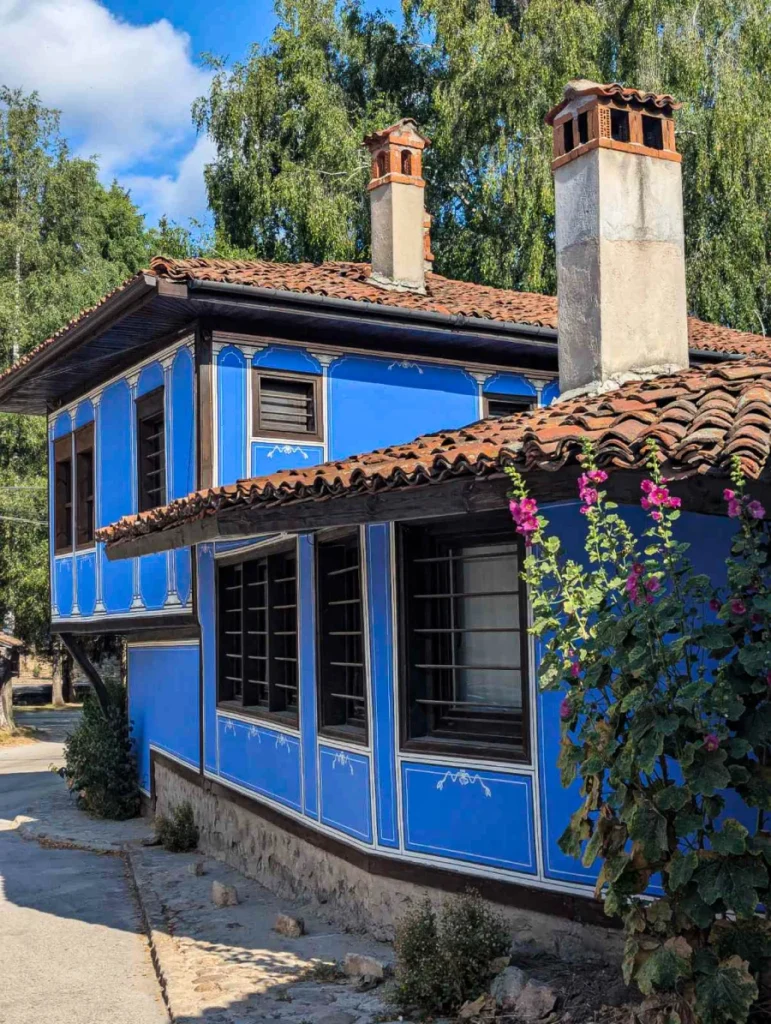
Strolling the Streets of Koprivshtitsa
One of the best ways to explore Koprivshtitsa is to simple wander its cobblestone streets. Narrow alleys gently curve, revealing something new at every corner. A beautifully-painted house, an arched stone bridge, or colorful blooms spilling over wooden fences. You might not realize it at first but every step you take echoes with centuries of history.
The sounds of distant bells mix with the soft babble of the river winding through the town. Locals greet you with a quiet nod or a warm smile, as if you are not just a visitor, but someone returning. It is incredibly easy to lose yourself in the charm of it all. Let yourself wander across stone bridges, peek into quiet courtyards, and pause beneath flowering trees. Every corner feels like it holds a secret, every window like a painting in a lived-in museum.
My husband kept asking “What is this place” with a genuine surprise and wonder in his eyes. And he is no stranger to Bulgaria after all of the trips we have taken. I would say a stroll through the streets is slowing down and taking things slow. But somehow, without even noticing, it we tracked more than 17,000 steps in just half a day.
Whether you plan to visit Koprivshtitsa for a day or an extended weekend getaway, strolling the streets is one of the most memorable things to do in Koprivshtitsa – a chance to feel the past, the peace, and the poetry of this extraordinary town.
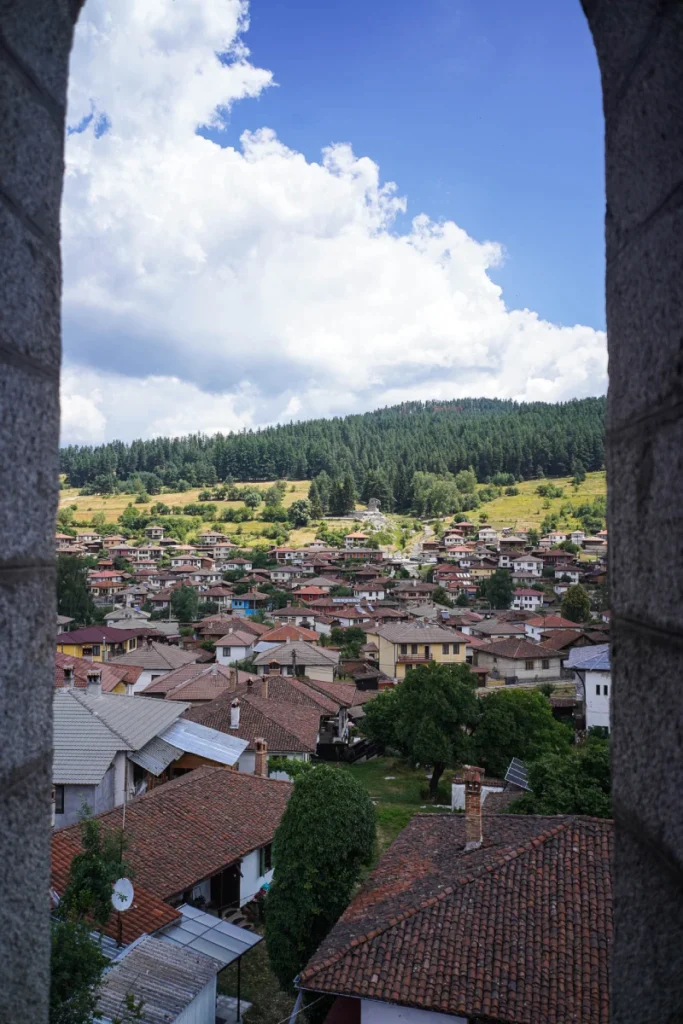
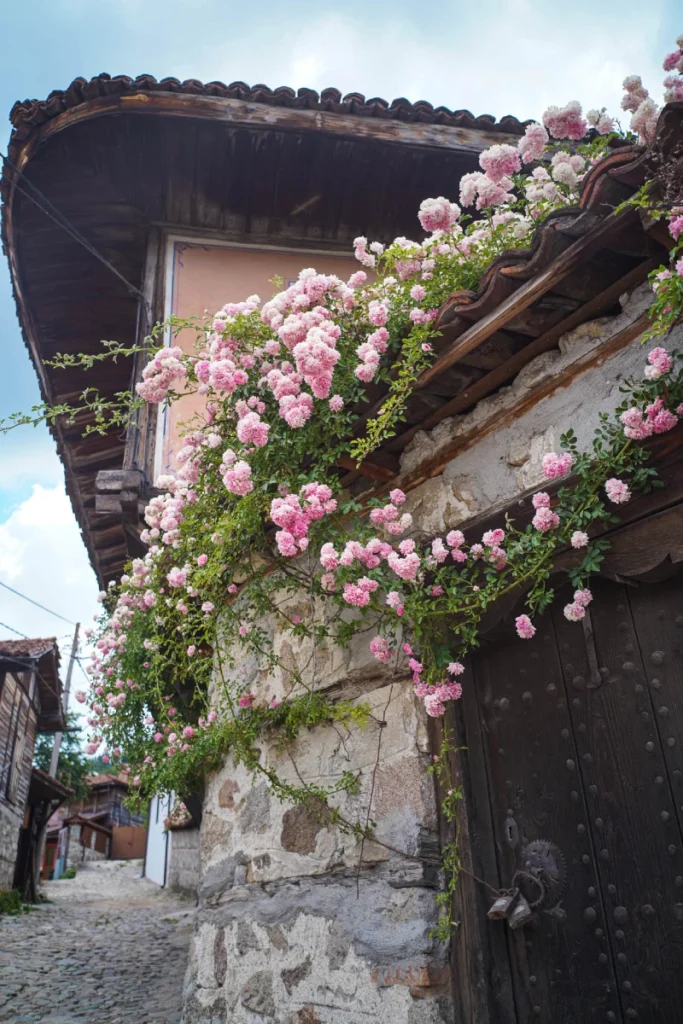
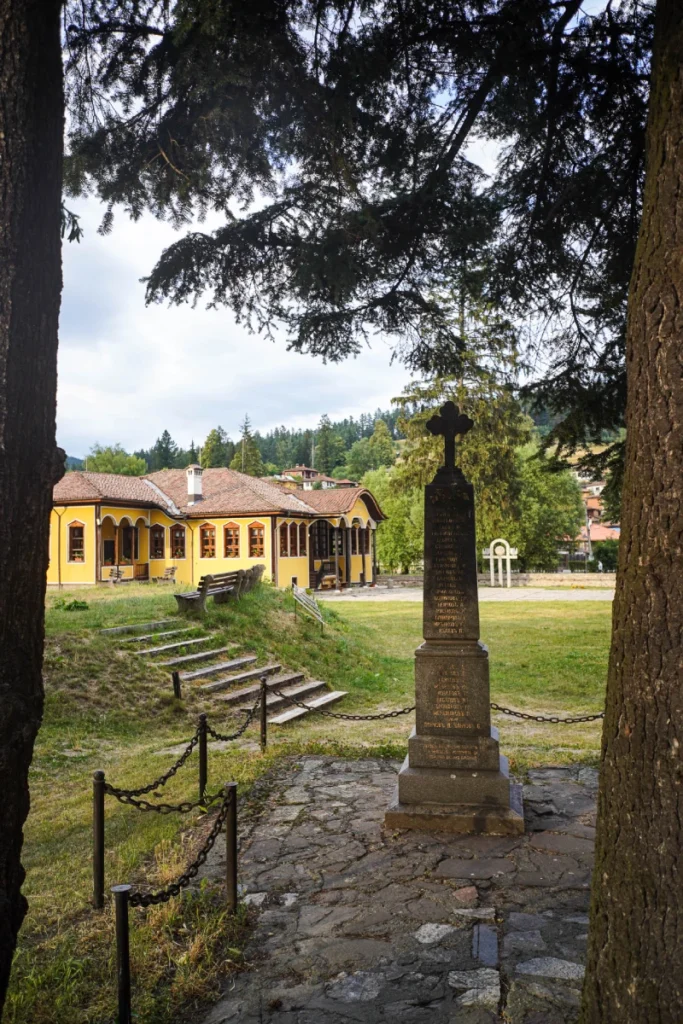
Where is Koprivshtitsa and How to Get There?
Nestled in the Sredna Gora mountains, Koprivshtitsa is located in central Bulgaria, roughly halfway between Sofia and Plovdiv. Though it feels worlds away from the rush of modern life, it is actually quite accessible. It is funny as my husband kept saying that it feels like we are in the middle of nowhere, and to be honest, that is part of the charm. Koprivshtitsa feels remote in the best possible way.
Getting to Koprivshtitsa by Train
There are a few ways to reach Koprivshtitsa, but the easiest, the cheapest and if you ask me the most romantic is by train. That’s how we traveled, and I would absolutely do it again!
Bulgarian Railways (BDZ) runs regular trains on the Sofia–Plovdiv line, and Koprivshtitsa is one of the stops. Keep in mind that the train station is about 8 km away from the actual town. This is not a reason not to visit, though, as small minibuses are timed to meet most train arrivals and departures, making the transfer very easy. The ride into town only takes about 10 – 15 minutes and costs €2 per person.
Tip: The bus schedule is not available, but you will find it at the train station. Take a photo of it for your return journey.
We travelled on the fast train from Sofia to Koprivshtitsa and it only took an hour and a half. Tickets were extremely affordable at around €7 each way per person. Strongly recommend getting tickets and booking your seat in advance.
Getting to Koprivshtitsa by Car
Driving to Koprivshtitsa can be quite convenint, especially if you are already renting a car and plan to explore other towns in the area. If you are traveling from Sofia, skip the highway and take Route 6, also known as the Podbalkanski pat (Sub-Balkan Road)—a more direct and scenic route through the foothills of the Balkan Mountains. The journey takes you through rolling hills, forests, and small villages, offering a peaceful transition into the mountains. Keep in mind that sections of the road might be a bit more windy. Take your time and drive carefully.
- Distance from Sofia: ~110 km/~1.5 to 2 hours by car
- Distance from Plovdiv: ~90 km/~1.5 hours by car
- Altitude: ~1,030 meters/3,280 feet above sea level
Parking: Since we travelled by train, we did not have to worry about parking. I believe there are several free or low-cost parking spots around town—near the river and the central square. If you will be staying overnight, though, I recommend looking for an accommodation with available parking.
Note: Keep in mind there are no bus options from either Plovdiv or Sofia to get to Koprivshtitsa
Where to Stay in Koprivshtitsa
While many visitors come to Koprivshtitsa as a day trip from Sofia or Plovdiv, spending the night here is absolutely worth it. In the quiet of the evening, after the day-trippers have left, the town takes on a different rhythm—slower and more magical. An evening walk after dusk reveals a quieter Koprivshtitsa, where the soft glow of lanterns and house lights dance gently on the peaceful surface of the river, doubling the town’s charm and inviting you to slow down and savor the moment.
So if your schedule allows it, try to stay at least for a night. Not just to rest, but to fully experience the ambience and soul of this mountain town. We also found Koprivshtitsa to be a great idea for a romantic weekend getaway in Bulgaria. The town is full of guesthouses, many of them family-run and housed in restored Revival-era homes. Expect warm welcomes, thick woolen blankets, and hearty breakfasts!
Where and What to Eat in Koprivshtitsa
Food lovers will find plenty to enjoy in Koprivshtitsa, where traditional Bulgarian cuisine is served up with generous hospitality and fresh, local ingredients. The town offers a range of restaurants and cafes that bring the flavors of the region to life.
Must-Try Local Dishes
- Banitsa: A flaky pastry filled with cheese and eggs — perfect for breakfast or a snack.
- Kavarma: A rich, slow-cooked stew with meat and vegetables, bursting with savory flavors.
- Shopska Salad: A refreshing mix of tomatoes, cucumbers, onions, peppers, and topped with salty white cheese.
- Tarator: A cold cucumber and yogurt soup, perfect for warmer days.
- Parlenka: A traditional Bulgarian flatbread, often topped with garlic butter or cheese. Goes perfect with a meaty meal.
Note: Make sure to stop at the Family hotel-restaurant Chuchura for either lunch or dunner. The food was absolutely divine!
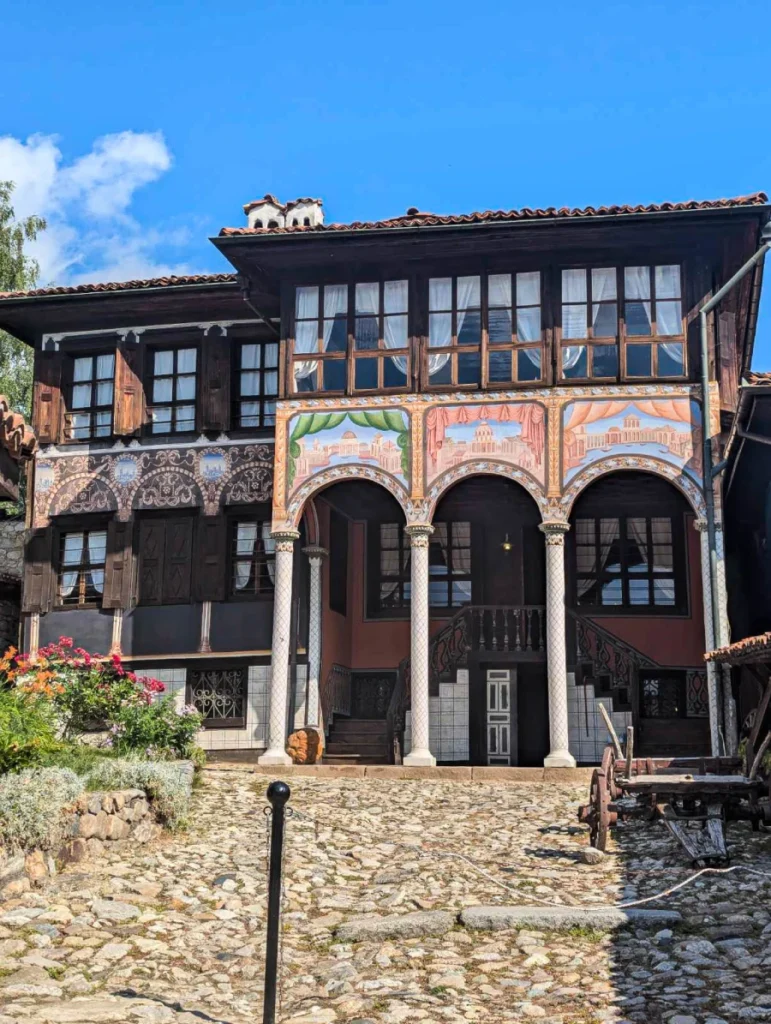
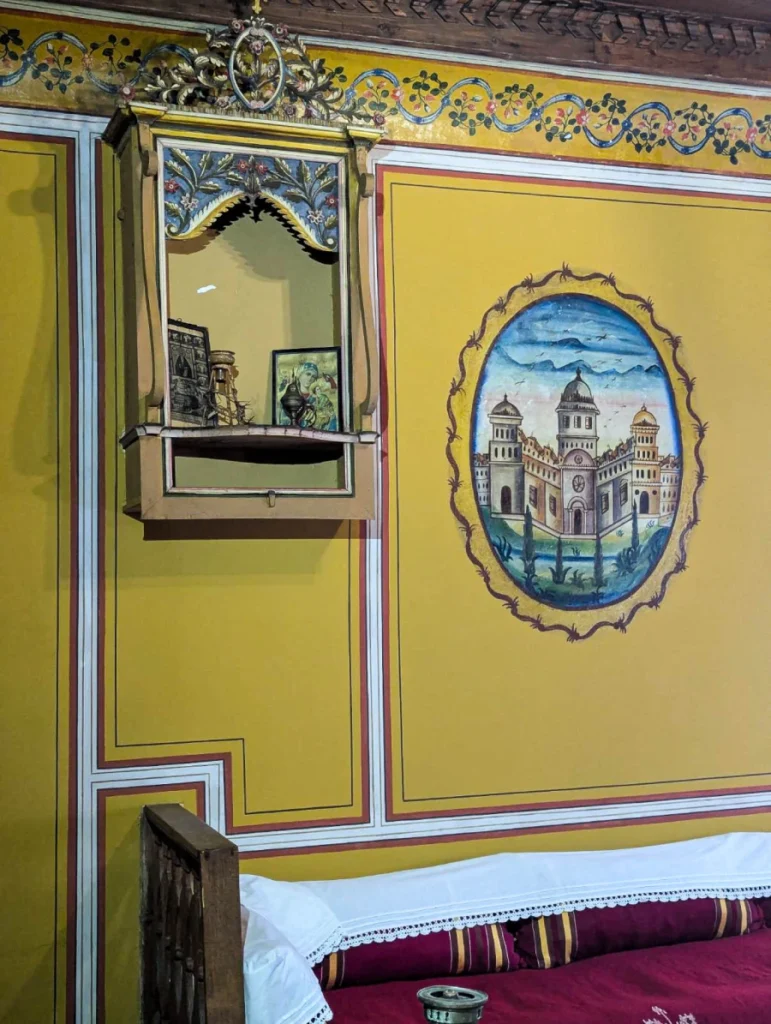
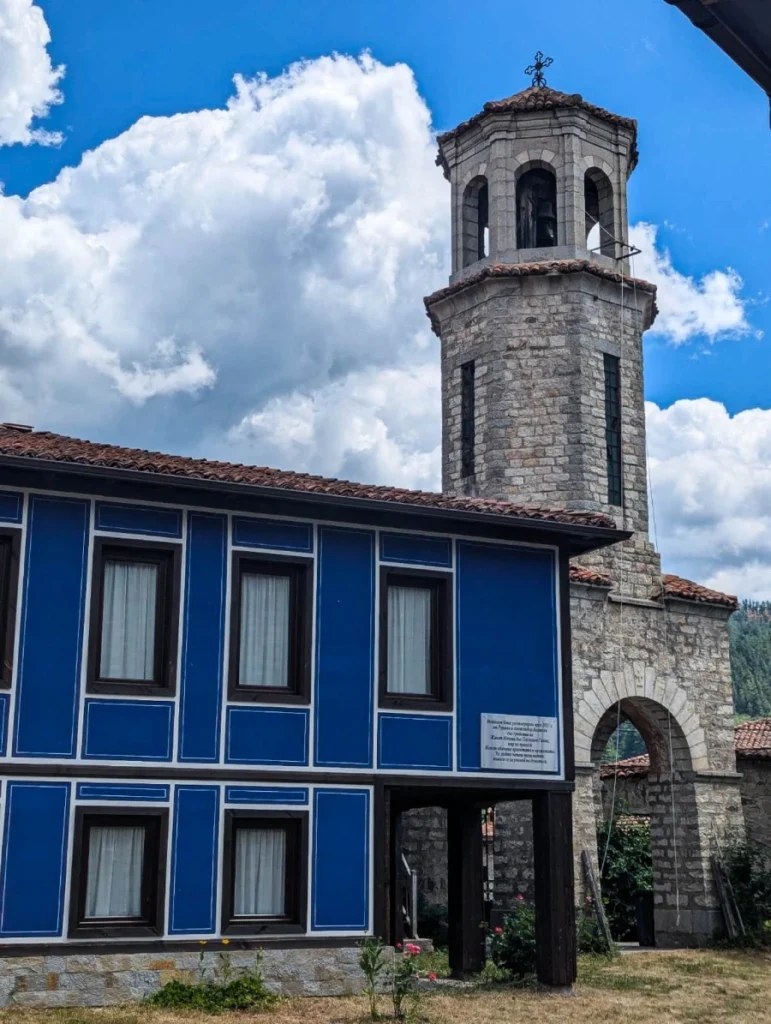
Travel Tips and FAQs
Best Time to Visit Koprivshtitsa
The most pleasant times to visit are in spring (April–June) and early autumn (September–October), when the weather is mild, the flowers are blooming (or the leaves are turning golden), and the streets are quieter.
Every five years, Koprivshtitsa is also home to the National Folklore Festival, takes place in the middle of August. Thousands gather in the meadows above the town to celebrate Bulgarian folk music, dance, and crafts. It’s a vibrant cultural experience unlike any other.
Is Koprivshtitsa Family-Friendly?
Yes, absolutely. Kids will enjoy the wide open spaces, the bridges over the river, and even the walk up to the Benkovski Monument. We actually planned a romantic getaway to Koprivshtitsa without our 2-year-old, but we were surprised by all the available playgrounds and areas for kids. That said, keep in mind:
- The cobblestone streets can be tricky for strollers, so a baby carrier or hiking backpack may be a better option for the smallest ones.
- Kids may not be as interested in visiting the museums, but lots of outdoor spaces for play
Can I pay by card?
I am including this section, because even as a Bulgarian I was surprised how often we actually needed cash in Koprivshtitsa. Make sure to bring enough cash! The museum entrance fees, the shuttle van from the train station, and many small shops all only accept cash. We were able to pay by card at every restaurant we visited, but even our guesthouse required cash for payment. Don’t count on paying by card in Koprivshtitsa and bring cash to save yourself the stress.
Will I get by with English?
This one is for my husband (who is American and only speaks English 😊). At most guesthouses, restaurants and even museums you will find someone speaking at least basic English. The town welcomes many international visitors so you won’t have troubles ordering food, getting tickets and check-ins. The museums had signs in both Bulgarian and English, so you will not miss on the historical and cultural context.
Koprivshtitsa is not just a town you visit—it is a place you feel. From its cobbled streets to the quiet beauty of its mountain setting, it invites you to slow down and breathe in the history. Whether you come on a day trip from Sofia or choose to stay a little longer, you will find yourself in a world that feels far away from the everyday. Koprivshtitsa is a place where the past still walks the streets.
You May Also Like
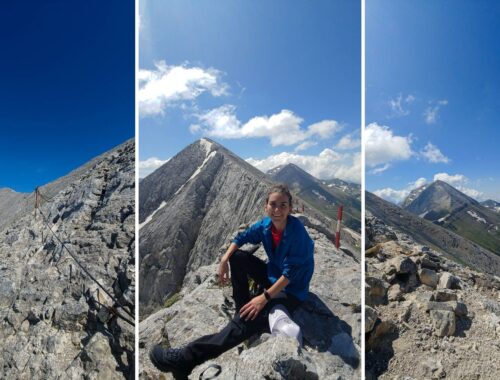
Hiking Koncheto Ridge – Once-in-a-lifetime experience in Pirin Mountains
August 30, 2021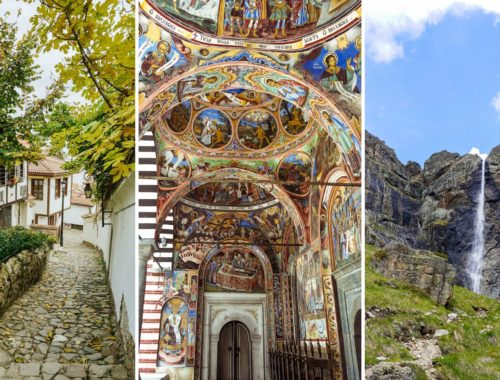
Bulgaria in Photos
April 11, 2020